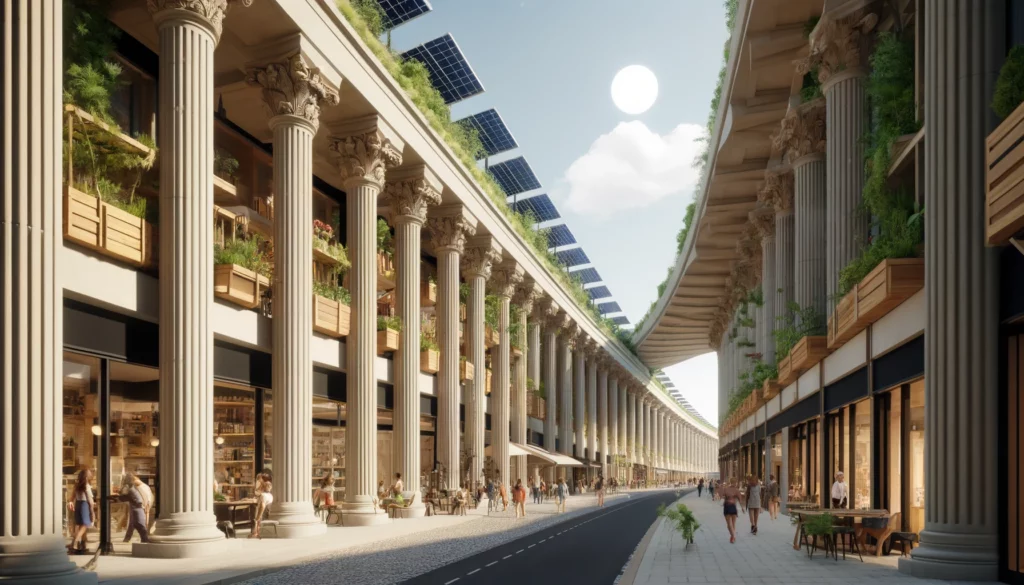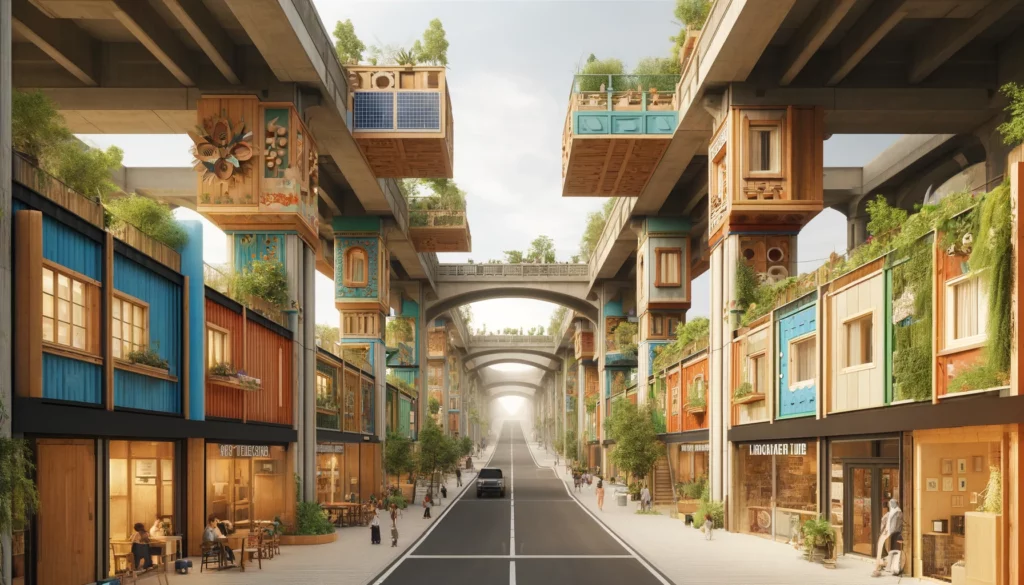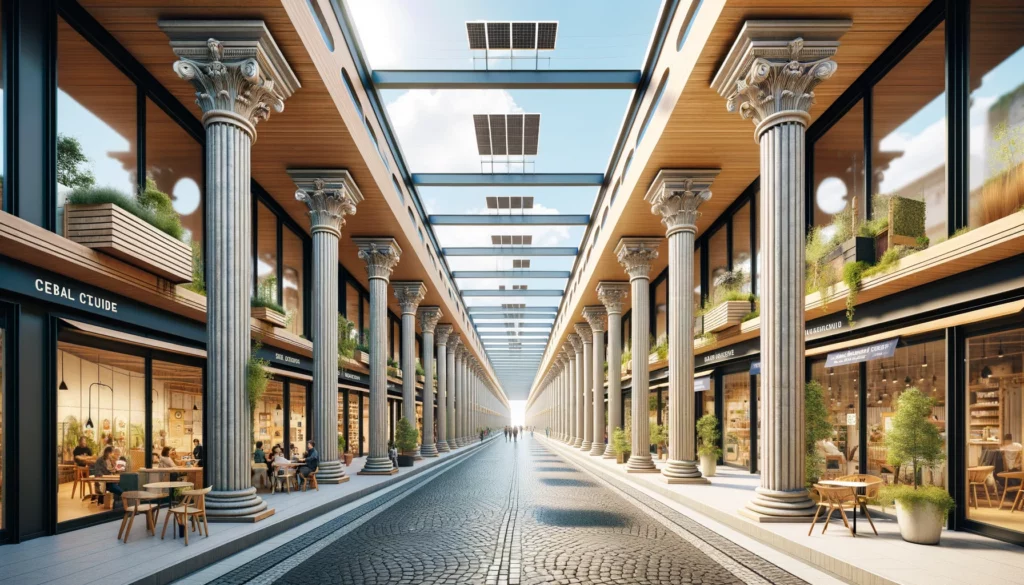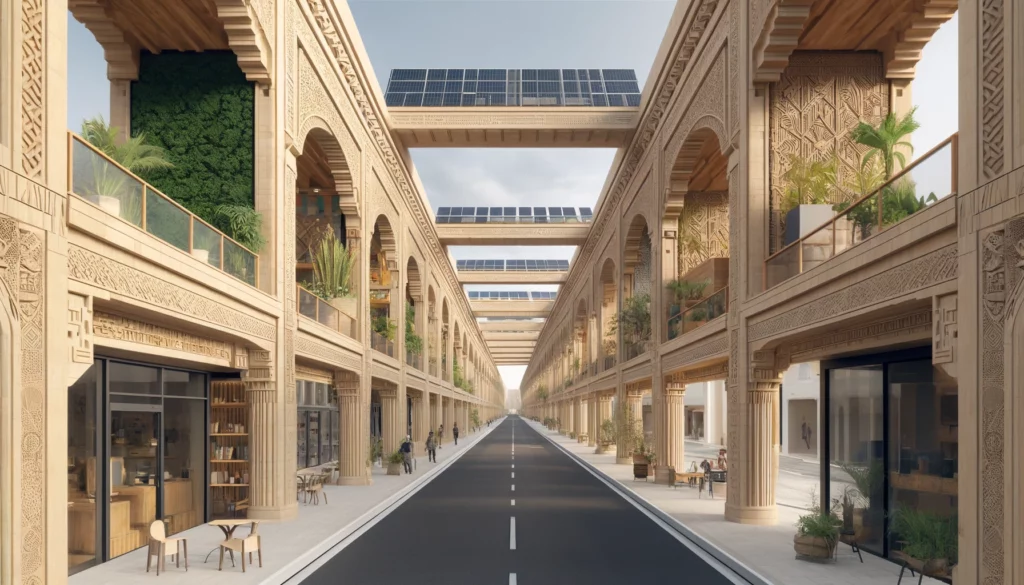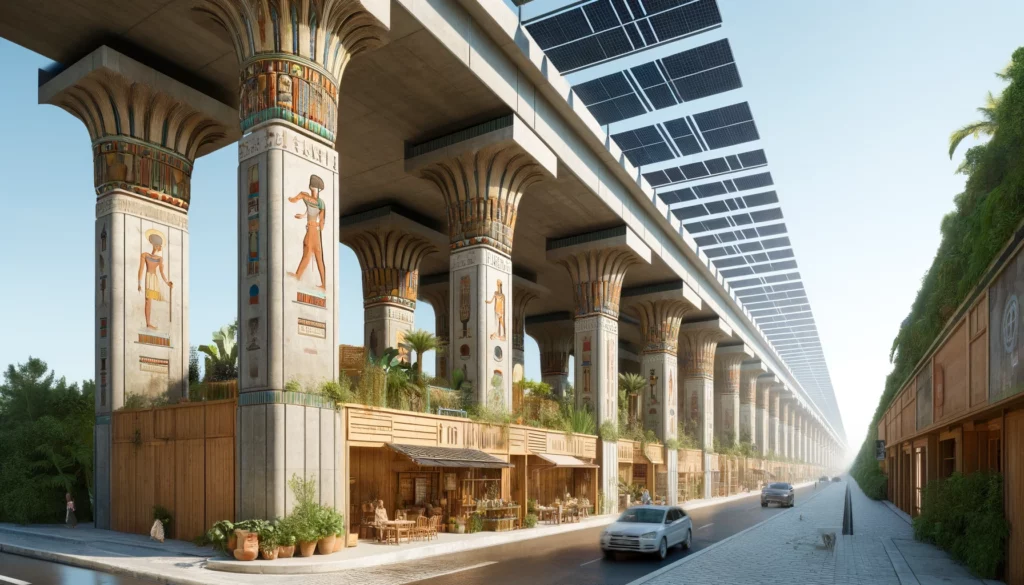Integrazione di Sistemi Energetici Alternativi negli Edifici
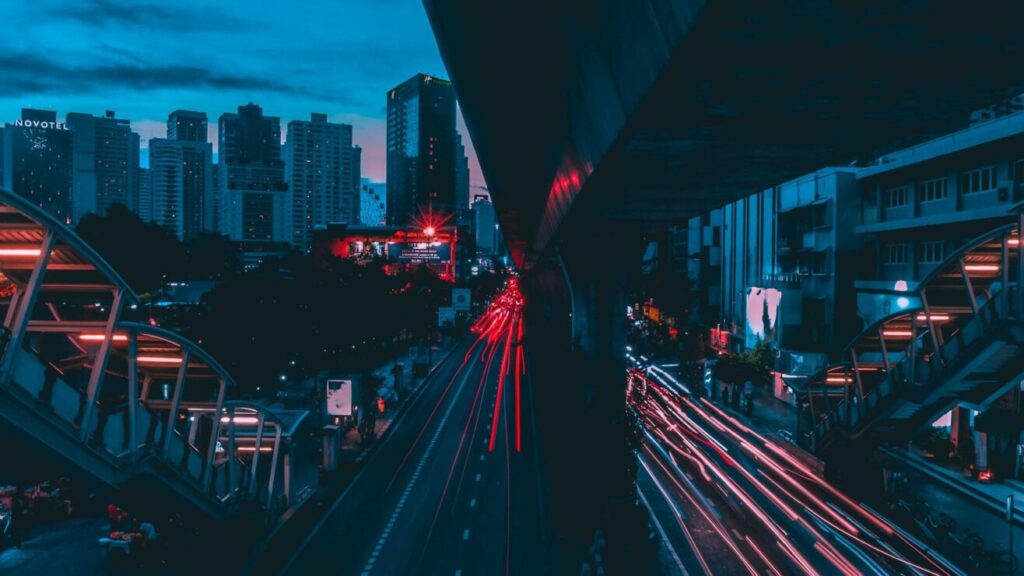
Integrazione di Sistemi Energetici Alternativi negli Edifici
Nel panorama in continua evoluzione dell’edilizia sostenibile, l’integrazione di sistemi energetici alternativi negli edifici rappresenta una sfida e un’opportunità per ridurre l’impatto ambientale e migliorare l’efficienza energetica. Con la crescente consapevolezza dell’importanza della transizione verso fonti energetiche più pulite, sempre più progettisti e costruttori si stanno impegnando nella ricerca e nell’implementazione di soluzioni innovative per ridurre il consumo di energia e promuovere la sostenibilità. In questo articolo esploreremo le possibilità e i benefici dell’integrazione di sistemi energetici alternativi negli edifici, contribuendo così a plasmare il futuro dell’architettura moderna.
Integrazione di Fonti di Energia Rinnovabile
Studi recenti dimostrano che l’integrazione di sistemi energetici alternativi negli edifici può portare a significativi risparmi energetici e a una riduzione delle emissioni di gas serra. Grazie all’utilizzo di fonti rinnovabili come il sole e il vento, è possibile ridurre la dipendenza da fonti non rinnovabili e contribuire alla sostenibilità ambientale.
Uno dei modi più efficaci per integrare fonti di energia rinnovabile negli edifici è l’installazione di pannelli solari sul tetto. Questi pannelli possono generare energia pulita e sostenibile per alimentare le esigenze energetiche dell’edificio, riducendo al contempo la bolletta energetica e l’impatto ambientale.
Inoltre, l’uso di sistemi di accumulo dell’energia, come batterie al litio, può garantire una fornitura continua di energia anche durante i periodi di scarsa disponibilità di sole o vento. Questo permette di massimizzare l’utilizzo delle fonti rinnovabili e di ridurre al minimo l’acquisto di energia da fonti tradizionali.
La combinazione di tecnologie avanzate come i pannelli solari e le batterie di accumulo, insieme a pratiche di efficienza energetica come l’isolamento termico e l’uso di finestre ad alto coefficiente di isolamento, può trasformare gli edifici in veri e propri centri energetici sostenibili e autosufficienti.
| Benefici dell’integrazione di sistemi energetici alternativi negli edifici |
|---|
| Riduzione delle emissioni di gas serra |
| Risparmio energetico |
| Autosufficienza energetica |
| Sostenibilità ambientale |
Investire nell’ negli edifici non solo porta benefici economici, ma contribuisce anche alla lotta contro il cambiamento climatico e alla creazione di un futuro più sostenibile per le generazioni future.
L’Importanza dell’Efficienza Energetica negli Edifici
L’efficienza energetica negli edifici è un tema di fondamentale importanza per garantire un futuro sostenibile e rispettoso dell’ambiente. Integrare sistemi energetici alternativi all’interno delle strutture abitative può contribuire in modo significativo a ridurre i consumi energetici e le emissioni di gas serra.
Uno dei principali vantaggi dell’adozione di sistemi energetici alternativi è la riduzione dei costi energetici a lungo termine. Grazie all’utilizzo di tecnologie come pannelli solari, pompe di calore e sistemi di recupero del calore, è possibile ridurre in modo significativo la dipendenza da fonti energetiche non rinnovabili e ridurre i costi di gestione dell’edificio.
Un altro beneficio importante è la riduzione dell’impatto ambientale. Utilizzando energie rinnovabili e sistemi efficienti, è possibile contribuire alla riduzione delle emissioni di CO2 e all’inquinamento atmosferico, migliorando così la qualità dell’aria e la salute delle persone che vivono e lavorano negli edifici.
Per garantire il massimo beneficio dall’integrazione di sistemi energetici alternativi, è fondamentale progettare gli edifici in modo intelligente e ottimizzare l’utilizzo delle risorse disponibili. Ci sono diversi strumenti e tecnologie disponibili per monitorare e gestire in modo efficiente l’energia all’interno degli edifici, come sistemi di automazione e monitoraggio energetico.
In conclusione, l’integrazione di sistemi energetici alternativi negli edifici è un passo fondamentale verso un futuro più sostenibile ed efficiente dal punto di vista energetico. Grazie alla combinazione di tecnologie all’avanguardia e pratiche progettuali oculate, è possibile ridurre i consumi energetici, abbassare i costi di gestione e contribuire alla salvaguardia dell’ambiente per le generazioni future.
Sistemi di Controllo e Automazione per Ottimizzare l’Utilizzo dell’Energia
Lorem ipsum dolor sit amet, consectetur adipiscing elit. Nullam bibendum, quam vitae fringilla ultricies, nunc justo sodales nunc, nec tincidunt lacus risus vel velit. Ut feugiat sapien a sem dictum, ut vestibulum ipsum bibendum. Integer nec tellus eget mi ultricies facilisis. Vestibulum efficitur magna non mauris congue, quis euismod mauris blandit.
Sed elementum lorem eu vestibulum imperdiet. Maecenas at posuere odio, vitae fermentum tellus. Curabitur varius orci id lectus luctus, vel volutpat nisi luctus. Fusce dictum nisi nec egestas consequat. Proin placerat metus non sollicitudin sodales. Integer auctor ligula non vulputate scelerisque.
Donec elementum justo vel risus luctus venenatis. Nunc ullamcorper ultricies velit, at venenatis dui. Mauris vel ligula id neque mollis tempus ac sit amet nibh. Phasellus convallis consequat tellus in sagittis. Nam varius nulla id cursus dignissim. Nulla euismod turpis in semper hendrerit.
| Modalità | Vantaggi |
|---|---|
| Energia Solare | Bassa emissione di CO2 |
| Energia Eolica | Riduzione dei costi energetici |
| Geotermia | Rinnovabile e inesauribile |
Quisque ut fringilla libero, vel scelerisque eros. Cras ut mauris vel erat facilisis faucibus. Aliquam euismod risus at arcu porttitor, at semper enim gravida. Sed rutrum tristique justo sed malesuada. Mauris vel lobortis eros. Phasellus congue risus vel libero finibus, sit amet euismod turpis sagittis.
Consigli per la Scelta e l’Integrazione di Sistemi Energetici Alternativi
Gli edifici svolgono un ruolo fondamentale nell’integrazione di sistemi energetici alternativi. Per massimizzare l’efficienza energetica e ridurre l’impatto ambientale, è essenziale considerare attentamente quali soluzioni integrate adottare.
Di seguito, alcuni consigli pratici per la scelta e l’integrazione di sistemi energetici alternativi:
- Valutare le esigenze energetiche dell’edificio: Prima di integrare qualsiasi sistema energetico alternativo, è importante condurre un’analisi dettagliata delle esigenze energetiche dell’edificio. In questo modo, sarà possibile identificare le soluzioni più adatte e garantire un’ottimale integrazione.
- Considerare l’efficienza energetica: Priorità deve essere data all’efficienza energetica degli impianti esistenti e dei nuovi sistemi integrati. Investire in tecnologie all’avanguardia e materiali isolanti di alta qualità può contribuire significativamente alla riduzione dei consumi energetici.
- Sfruttare le energie rinnovabili: L’utilizzo di energie rinnovabili come solare, eolica, geotermica o idroelettrica può essere una soluzione vantaggiosa per integrare sistemi energetici alternativi negli edifici. Le fonti rinnovabili offrono un approccio sostenibile e a lungo termine per ridurre l’impatto ambientale.
| Tipo di Sistema Energetico Alternativo | Vantaggi |
|---|---|
| Solare fotovoltaico | Produzione di energia pulita e riduzione delle bollette energetiche. |
| Pompa di calore | Riscaldamento efficiente e minore consumo di combustibili fossili. |
Infine, è importante coinvolgere professionisti esperti nel settore dell’energia e dell’edilizia per garantire una corretta progettazione e installazione dei sistemi energetici alternativi. Con l’approccio giusto e le giuste scelte, è possibile realizzare edifici sostenibili e a basso consumo energetico.
In Conclusione
Concludiamo così la nostra esplorazione sull’integrazione di sistemi energetici alternativi negli edifici, un tema sempre più rilevante nell’attuale contesto di transizione energetica. Speriamo che questo articolo vi abbia stimolato a considerare le diverse soluzioni disponibili per rendere gli edifici più sostenibili ed efficienti dal punto di vista energetico. Ricordate che investire in tecnologie innovative può contribuire non solo a ridurre il nostro impatto sull’ambiente, ma anche a risparmiare sulle bollette e migliorare il comfort abitativo. Grazie per averci seguito e continuate a esplorare le opportunità offerte dalle energie rinnovabili e dalla tecnologia per un futuro più sostenibile. Buona integrazione!

FAQ
Domande frequenti? Scopri tutte le risposte ai quesiti tecnici più comuni! Approfondisci le informazioni essenziali sulle opere metalliche e migliora la tua comprensione con soluzioni pratiche e chiare. Non lasciarti sfuggire dettagli importanti!
the importance of understanding the history of art and the
continua sperimentazione create negli artisti la consapevolezza di ciò che è già stato fatto e la capacità di creare opere che siano al contempo radicate nelle tradizioni ma portatrici di nuove idee e influenze.
Art and the Balance between Memory and Modernity
In the world of art, we often find a constant tension between the past and the future, tradition and innovation. This delicate balance is at the heart of “Memory and Modernity: Balancing the Past and the Future”, a fascinating exploration of works that embrace the cultural heritage of the past while facing the challenges of the contemporary world. In this article, we will examine how contemporary artists seek inspiration from the past to create works that are rooted in history while projecting towards the future.
Introduction: Contextualizing the Concept of Memory and Modernity
In contemporary society, the concept of memory is essential to understand the relationship between the past and the future. Modernity constantly pushes us towards innovation and change, but it is important to balance this perspective with the appreciation of our history and roots. Memory is what allows us to keep the bond with the past alive, to preserve our traditions, and to maintain our cultural identity. At the same time, modernity urges us to look forward, to experiment with new ideas and to constantly evolve. Finding a balance between these two dimensions is essential to build a sustainable and meaningful future.
In art, the relationship between memory and modernity is expressed in many ways. Artists of different eras and cultures have addressed this theme through works that blend elements of the past with a contemporary perspective, creating new forms of expression and significance. Through art, we can explore the nuances of memory and modernity, reflecting on our roots and our aspirations for the future. In this context, the challenge emerges of balancing the preservation of historical heritage with the drive towards innovation and creativity.
Remembering to Inspire: The Importance of Preserving the Past in Artistic Creation
Art is a bridge that connects the past to the present, allowing us to glimpse into the souls of the generations that came before us. In a fast-paced world focused on the future, it is crucial to remember that without roots, there is no flower. Preserving our artistic past means nurturing creativity and inspiration for the future. In the world of art, memory plays a fundamental role. Remembering to inspire, to create connections between different eras, and to transmit emotions that resist the passing of time. From painting to sculpture, from music to literature, every form of art is born from the collective memory of humanity and evolves through the continuous reinterpretation of the past.
When an artist confronts their cultural and artistic background, they are engaging in a dialogue with the minds and hearts of those who came before them. It is in this dialogue that works of art are born, speaking to the present while preserving the memory of the past. The importance of preserving artistic heritage lies not only in admiring what has been done, but also in drawing inspiration for what could still be achieved.
In the balanced relationship between memory and modernity lies the secret to creating timeless works of art, capable of speaking to all generations and resistant to passing trends. Keeping the flame of artistic inspiration alive means embracing the past with curious eyes, ready to transform the dust of centuries into creative gold. Whether through explicit tributes or daring reinterpretations, art has the power to turn memory into the future.
Innovating without Forgetting: How to Balance Tradition and Experimentation in Contemporary Art
When it comes to contemporary art, there is often a focus on the need for innovation and experimentation. However, it is crucial not to forget the roots and traditions that have shaped art throughout the centuries. Balancing the past and the future becomes a challenge for artists who aim to create meaningful and lasting works.
In the context of contemporary art, the memory of the past manifests itself through various forms and artistic techniques that intertwine with avant-garde and experimentation. Understanding the history of art and the continuous experimentation creates in artists the awareness of what has already been done and the ability to create works that are both rooted in traditions and bring new ideas and influences.
Conclusion: Finding Harmony Between Memory and Modernity in Art
In conclusion, the delicate balance between memory and modernity is a recurring theme in the world of art. Artists draw inspiration from the past to create works that are both anchored in tradition and open to innovation. To create timeless and meaningful art, it is essential to preserve our artistic heritage while constantly looking towards the future. As the saying goes, œIn art, tradition is not the worship of ashes, but the preservation of fire. Let us remember and honor our past to create a better tomorrow.Influence and Reflection: Finding Balance between Tradition and Innovation in Art
The influence of tradition can be seen in works that blend traditional elements with new ideas and visual languages. For many artists, the balance between tradition and experimentation becomes a creative and reflective process, where engaging with the past becomes a starting point for exploring new pathways and interpretations. Art becomes a bridge between memory and modernity, where the dialogue between tradition and innovation results in meaningful and profound works.
Through the combination of materials, techniques, and artistic concepts, contemporary artists are able to create works that reflect the complexity of our world without losing sight of the cultural and historical roots that have shaped us as individuals and as a society. In this way, art becomes a powerful means of exploring and understanding our relationship with the past, present, and future.
Practical Tips for Artists in Finding Balance Between Past and Future
As artists immerse themselves in their work, it is essential to find a balance between respecting the past and embracing innovation for the future. This balance between memory and modernity can be challenging to achieve, but with some practical tips, it is possible to create unique and meaningful works of art that reflect both tradition and contemporaneity.
Some practical tips for finding balance between past and future include:
- Studying the past: Before fully immersing in the creative process, it is important to study and understand the historical background of art. This allows artists to draw inspiration from the works of past masters and integrate traditional elements into their modern creations.
- Experimenting with new techniques: To embrace modernity, artists should be open to experimenting with new techniques and materials. This can lead to surprising discoveries and a more innovative approach to creating art.
- Fusion of styles: An effective way to balance the past and future is to fuse different artistic styles. This can create a unique work that combines traditional elements with a contemporary sensibility.
- Reflection on the socio-cultural context: Considering the socio-cultural context in which one is working can help artists create works that are relevant to their time while still maintaining a connection to tradition.
An Example of Style Fusion in Artwork:
Artwork Styles
The Mona Lisa by Leonardo da Vinci Renaissance Italian, Realism
Les Demoiselles d’Avignon by Pablo Picasso Cubism, Primitivism
Composition in Red, Yellow, and Blue by Piet Mondrian De Stijl, Abstraction
With the right approach and balance between past and future, artists can create timeless works of art that will continue to inspire and move future generations. Remaining true to artistic roots while embracing modernity is the key to creating art that is both timeless and a testament to creativity and innovation.
In Conclusion
The ability to balance past and future through art is a task that requires deep reflection and sensitivity on the part of artists. “Memory and Modernity” represents a creative exploration of how cultural heritage can be reinterpreted and reinvented to adapt to the needs and challenges of modern times. Through the synergy of tradition and innovation, artists can create works of art that speak to both the heart and mind, conveying a powerful and lasting message.Se fan (Article
Rewritten article:
The dialogue between the past and future is one of constant exploration, and we have the opportunity to enhance our world with art that connects us to our history and inspires us for the future.
In today’s rapidly advancing society, it is easy to become disconnected from our roots and lose sight of where we come from. However, by incorporating art that acknowledges and celebrates our past, we can create a stronger sense of identity and cultural heritage.
Art has always been a powerful medium for storytelling and preserving history. By depicting significant events and individuals of the past, it allows us to gain a deeper understanding of our ancestors and the struggles they faced. This not only enriches our knowledge of the past, but also provides valuable lessons and inspiration for the present and future.
Moreover, incorporating traditional forms of art can revitalize and preserve dying customs and techniques, giving them a place in the modern world. By doing so, we honor our heritage and prevent it from fading into obscurity.
Furthermore, art can serve as a means to bridge the gap between generations. Older individuals can pass down their knowledge and skills to younger generations through art, ensuring that cultural practices are not lost. This promotes intergenerational understanding and creates a stronger bond within communities.
In addition to connecting us to our past, art has the power to inspire and shape our future. By showcasing groundbreaking and innovative works, it challenges us to think beyond our current realities and pushes boundaries. Art can also bring attention to important societal issues and encourage change, making it a powerful tool for progress and development.
To truly amplify the impact of art as a bridge between the past and future, we must continuously challenge ourselves to create unique and meaningful pieces. Whether it is through experimenting with new techniques, incorporating diverse perspectives, or using technology to push boundaries, the possibilities are endless.
In conclusion, the dialogue between the past and future is a vital aspect of our progress and growth as a society. By incorporating art that connects us to our heritage and inspires us for the future, we can create a harmonious balance between the two and continue moving forward while honoring our past. Let’s embrace this opportunity to enrich our world with meaningful and powerful art.

"Hai un'opinione tecnica o una domanda specifica? Non esitare, lascia un commento! La tua esperienza può arricchire la discussione e aiutare altri professionisti a trovare soluzioni. Condividi il tuo punto di vista!"

